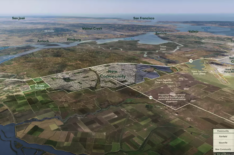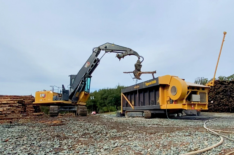Recent Publications
While this report underscores that it is possible for Oakland to dig itself out of its budget and crime crisis, as many other cities have done before, Oakland cannot change its economic downcycle or public safety perceptions and outcomes without prioritization of public safety across city leadership, community stakeholders, and industry partners. The city and its elected and appointed leadership will need to make difficult and bold choices today to preserve and protect Oakland tomorrow. Oakland’s future – its economic vitality, financial sustainability, and public confidence – will be defined by whether leaders protect the status quo, which will prolong Oakland’s cycles of budget stress and safety challenges, or embrace a new approach that places public safety at the center of all budget and policy decisions.
Read More in the Summary »Silicon Valley and the Bay Area have long been
identified with technological innovation, the creation
of new industries, and the disruption of old ones. In
recent years, digitalization has served as the unifying
thread, as both large corporations and startups
from across the United States and around the world
have migrated to the region to be part of the digital
revolution and contribute to its advancement. This
movement isn’t limited to one industry or sector but
has spanned a broad range of disciplines as companies
and governments consider the impact of digital
technologies on their competitiveness. The region is
also identified with entrepreneurship and the creation
or application of technology by emerging companies
that disrupt existing industries or create new ones.
This applies to space. In the popular mind, the
Bay Area—which includes Silicon Valley—is identified
with industries such as computer hardware, software,
semiconductors, or social media, while the space
industry is primarily identified with Southern California,
Florida, or Texas. The Bay Area, however, has a
deep history in the space sector and is playing a
revolutionary role there as well. This report assesses
the space industry in the region—its roots and
development, its current focus, and its contributions to
US competitiveness and the national space mission.
Due to extended shutdowns from the COVID-19 pandemic, work-from-home policies implemented by Bay Area employers, and a reduction in travel, the Bay Area’s downtown cores have experienced a hollowing out of economic activity. Since 2020, the pandemic has changed how businesses choose their locations, how households choose where to live, how people choose to work, and how employees choose to commute.
Read More in the Summary »The UK today stands as Europe’s premier center for technology innovation, venture investment, and startup activity, and while other European centers are growing, the UK retains the prime position. This report examines the institutional and scientific roots of its competitiveness, its vibrant startup economy, and the opportunities they present for Bay Area and other US investors and economic partners.
Read More in the Summary »California’s housing market is facing an intractable challenge. The combination of high demand—particularly in the state’s coastal economic hubs—and limited housing inventory has created an untenable situation for would-be homebuyers. Median home values in many California markets are well above $1 million, and housing costs across the state are much higher than national averages.
Read More in the Summary »The Final Report from the Assembly Select Committee on Permitting Reform, chaired by Assemblymember Buffy Wicks (D-Oakland), examines systemic permitting challenges that slow critical housing and climate infrastructure projects in California. Based on a year of research, public hearings, site visits, and input from over 100 stakeholder organizations, the report identifies key barriers, highlights best practices, and outlines opportunities for reform to reduce uncertainty, streamline approvals, and lower costs. The findings underscore how California’s current permitting system drives delays and increased expenses, hindering efforts to address the state’s urgent housing and climate needs.
Read More in the Summary »As the Bay Area’s trade and investment with Europe grows, Ireland occupies a unique position as a platform and technology bridge between the US and Europe. It has successfully combined targeted economic strategies with talent and innovation, creating a highly competitive European base for Bay Area and other US companies. The Bay Area’s relationship with Ireland reflects a mutually beneficial economic alignment but also deep historical roots, with 2023 marking the 90th anniversary of Ireland’s diplomatic presence in San Francisco. Through its large Irish community, active engagement by the Irish Government, and strong economic and cultural linkages, the San Francisco Bay Area serves as a key connector between Ireland and the United States.
Read More in the Summary »The East Solano Plan seeks to create a new, mixed-use community at the heart of the Northern California Megaregion with homes, businesses, and civic uses organized into medium-density neighborhoods. At full build out, the plan has room for 400,000 people. The plan includes a commitment to bring 15,000 jobs to Solano County in the first phase of development, along with $500 million in community benefits such as downpayment assistance for Solano County residents and a $200 million fund to invest in revitalizing existing downtowns throughout Solano County. At full build out, these numbers increase to $4 billion in community benefits and $800 million for Solano County downtowns.
Read More in the Summary »Without intervention, wildfires will continue to threaten homes, create economic costs, and jeopardize the health of the state’s residents. A variety of Federal, State and local programs, grants, and initiatives are advancing, however public-sector programs alone are unlikely to ever reach the scale necessary to completely mitigate the threat. It is therefore essential to co-develop programs and initiatives to leverage the resources within the private sector.
Read More in the Summary »This conversation took place at a December 2023 symposium jointly sponsored by the Bay Area Council Economic Institute, the Stanford Center for China’s Economy and Institutions (SCCEI) and the Shenzhen-based China Development Institute (CDI) on where, despite the obstacles, opportunities can still be found to build business and economic ties between the U.S. and China.
Read More in the Summary »To unlock the economic potential of achieving racial equity, the Bay Area’s policymakers, businesses, nonprofit institutions, community groups, and other critical stakeholders must become not only a voice for change, but the actors of change. To truly bridge the deeply entrenched divides will require new policies, new investments, and new strategies. Most importantly, it requires racial equity to rise to the forefront of decisions made by business and government. Racial equity will not be achieved by a single policy or investment; it instead is a goal that requires numerous steps to break down biases—both conscious and unconscious—and to fundamentally restructure how economic decisions are made.
Read More in the Summary »










